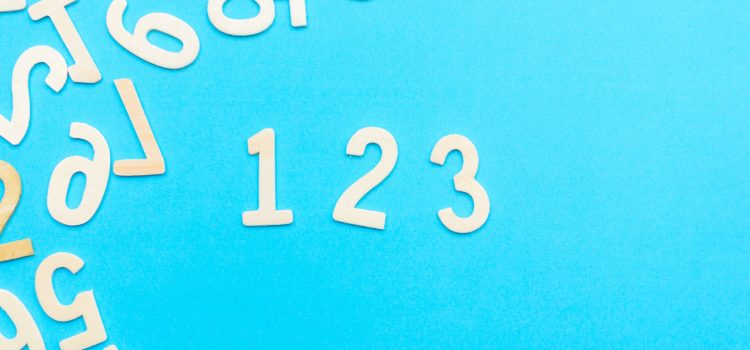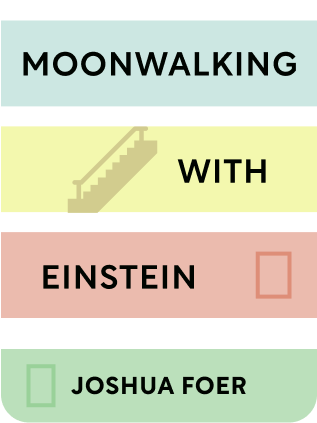

This article is an excerpt from the Shortform summary of "Moonwalking With Einstein" by Joshua Foer. Shortform has the world's best summaries of books you should be reading.
Like this article? Sign up for a free trial here .
What is the chunking method for memorization, and how does it work? Why is chunking effective?
The chunking method is a memory technique that lets you put individual pieces of information together into more meaningful groups. Giving the information value makes it more likely you’ll remember it.
Read below to find out how the chunking method works and how to use it.
Chunking Method
The chunking method is another foundational memory technique. Chunking memory strategy involves combining individual pieces of information into more meaningful groups.
For example, say you need to remember this string of numbers: 5, 4, 0, 5, 0, 6, 3, 3, 1, 2, 2, 4. That’s 12 things to remember. However, if you break the numbers into four groups of three, that’s only four things to remember: 540, 506, 331, 224. (This is why credit card numbers and phone numbers are broken up.)
You could additionally break the 12-digit string into only two chunks in a date format—54/05/06 and 33/12/24. Finally, you could even transform these 12 digits into a single chunk—your grandma’s and mother’s birthdays.
How Does Chunking Memory Strategy Work?
Your working memory can only hold five to nine pieces of information at once, so if you need to remember something like a 16-digit credit card number, it’s a tall order. Chunking is a method of breaking and combining individual things into meaningful groups so that you have fewer things to remember.
For example, if you had to remember the letters ONCEUPONATIME, that’s 13 individual letters, more than your working memory can handle. However, if you group those letters into four words, ONCE UPON A TIME, then you only have to remember four things instead of 13.
Memory and Other Mental Faculties
Having covered memory as its own entity, we can now consider it in relation to many other intangibles such as expertise, identity, and our perception of time.
Expertise and Memory
How are memory and expertise related? Can experts use the chunking method? Let’s say you’re an expert cab driver—you have a great memory for directions and you never get lost. Which came first—your great memory for directions, which led you to a career driving a cab? Or your career driving a cab, which required you to develop a great memory for directions?
Before we can understand how memory impacts expertise, we need to understand the general process of becoming an expert. K. Anders Ericsson (who studied SF) has been researching memory and expertise for decades. He’s found that expertise comes from perception and memories, not intuition or reasoning. When an expert encounters a situation, they don’t have to think consciously or analyze; they simply recognize a pattern they’ve seen before. They know what information matters, what doesn’t, and they instinctively know how to apply it in the most appropriate way.
Experts do a form of the chunking method—they use memories that are already in their brains to make associations and connections. Therefore, you need to have a good memory to be an expert. Read about these chunking examples:
Chunking Example #1: Police Officers
When Ericsson studied police officers, he put them in front of a big screen and showed them multiple scenarios, including one of a man walking towards a school with what might be a bomb strapped to his chest. The more experienced officers knew what to do without thinking—they yelled at the man to stop and pulled out their guns. When he didn’t, most of them shot him. The experienced officers didn’t just see a man going towards a school; they noticed everything about him, such as a nervous twitch. They then compared what they observed to what they’d seen before, and acted.
The less experienced officers let the man walk into the school because they didn’t have the context to interpret the man’s actions.
Chunking Example #2: Chess
Historically, chess has been a test of intellect—you have to be smart to plan moves many turns in advance and predict your opponent’s behavior. However, when Russian scientists tested chess players’ perception and cognition in the 1920s, the chess players didn’t do any better than the average person.
Adriaan de Groot also looked at chess players in the 1940s. De Groot set up boards in a way that there was an objectively correct but not clearly visible move. He gave the boards to masters and asked them to think aloud. He learned, to his surprise, that chess masters don’t analyze the board or plan moves, they just instinctively see the ideal move right away, usually within five seconds.
Further studies of master chess players, such as where they focus their eyes on the board or what parts of the brain they use, revealed that they chunk the board. To make moves, masters recognized configurations that they’d seen before and knew the outcomes of. Researchers concluded that the best indicator of skill at chess is your ability to memorize board positions, not your intelligence.
However, while masters were good at memorizing boards, they weren’t better than anyone else at general memorization. In fact, when given chess boards that were just random arrangements of pieces in locations that could never happen in a real game, they weren’t even good at memorizing those. This is because a random arrangement of pieces on a board doesn’t have any context—a player never would have seen an impossible-to-arrive-at arrangement before.
The chunking method is one of the most tried and true strategies for memorization. Chunking memory strategy can be applied to many different situations and tasks, making it very effective.

———End of Preview———
Like what you just read? Read the rest of the world's best summary of Joshua Foer's "Moonwalking With Einstein" at Shortform .
Here's what you'll find in our full Moonwalking With Einstein summary :
- The memory techniques that took the author from novice to US memory champion in one year
- The 6 key types of memory we use everyday
- Why memory isn't just genetic, and how you can improve your memory with the right techniques






